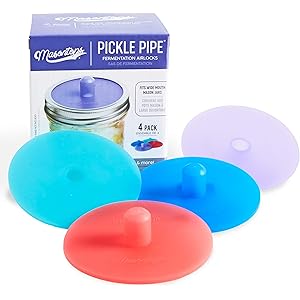Understanding Carbonation in Coca-Cola
Coca-Cola achieves its signature fizz through a process known as carbonation, which involves dissolving carbon dioxide gas (CO2) into the liquid under pressure. This process not only enhances the drink’s flavor profile but also contributes to its refreshing quality. The science behind carbonation is rooted in the principles of gas solubility, where CO2 is more soluble in liquid at higher pressures. When the pressure is released, such as when opening a bottle or can, the gas escapes, creating the characteristic bubbles that we associate with carbonated beverages.
The Role of Carbon Dioxide in Flavor
Carbon dioxide plays a crucial role in the overall taste experience of Coca-Cola. The presence of CO2 not only adds a tingling sensation on the palate but also enhances the perception of acidity, which is vital for balancing the sweetness of the drink. This interplay between sweetness and acidity is what makes Coca-Cola so enjoyable for many consumers. The carbonation process is carefully controlled to ensure that the right amount of CO2 is infused, maintaining the drink’s iconic flavor profile.
How Carbonation is Achieved
The carbonation process for Coca-Cola begins at the manufacturing facility, where purified water is combined with high-fructose corn syrup or sugar, flavoring agents, and caramel color. Once these ingredients are mixed, the liquid is chilled to enhance the solubility of carbon dioxide. The chilled mixture is then subjected to high pressure, allowing CO2 to dissolve into the liquid. This step is critical, as it ensures that the carbonation is uniform throughout the beverage, providing a consistent drinking experience.
The Importance of Pressure in Carbonation
Pressure is a key factor in the carbonation process. By maintaining high pressure during the infusion of CO2, manufacturers can significantly increase the amount of gas that dissolves in the liquid. This is why Coca-Cola is typically stored in pressurized containers, such as cans and bottles. When the container is opened, the pressure is released, allowing the dissolved CO2 to escape rapidly, resulting in the formation of bubbles and the signature fizz that consumers love.
Temperature’s Impact on Carbonation
Temperature also plays a vital role in the carbonation process. Colder temperatures increase the solubility of carbon dioxide, allowing more gas to be dissolved in the liquid. This is why Coca-Cola is often served chilled; it not only enhances the drink’s refreshing qualities but also ensures that the carbonation remains intact for a longer period. Conversely, warmer temperatures can lead to a loss of carbonation, resulting in a flat taste that is less appealing to consumers.
Get more content like this!
Sign up to receive updates and new terms first hand.
Carbonation Levels in Coca-Cola
The level of carbonation in Coca-Cola is meticulously calibrated to create the perfect balance of fizziness and flavor. Different Coca-Cola products may have varying levels of carbonation, with some being more effervescent than others. This variation is intentional, as it allows the brand to cater to different consumer preferences. The carbonation level is measured in volumes of CO2, with standard Coca-Cola typically containing around 2.5 to 3.0 volumes of carbon dioxide.
Packaging and Carbonation Retention
The packaging of Coca-Cola is designed to retain carbonation effectively. Cans and bottles are constructed to withstand internal pressure, preventing the escape of CO2 until the consumer is ready to enjoy the drink. Additionally, the materials used in packaging are chosen for their ability to create a barrier against external factors that could affect carbonation, such as light and oxygen. This ensures that the product remains fresh and fizzy throughout its shelf life.
Consumer Experience and Carbonation
The carbonation in Coca-Cola significantly influences the consumer experience. The sound of a can opening, the sight of bubbles rising, and the sensation of fizz on the tongue all contribute to the enjoyment of the beverage. These sensory elements are carefully considered in marketing strategies, as they evoke feelings of refreshment and satisfaction. Coca-Cola’s branding often emphasizes these aspects, reinforcing the connection between carbonation and the overall enjoyment of the drink.
Environmental Considerations in Carbonation
As the beverage industry evolves, Coca-Cola is also addressing environmental concerns related to carbonation. The production and use of carbon dioxide have implications for sustainability, prompting the company to explore more eco-friendly practices. This includes investigating the use of captured CO2 from industrial processes and enhancing the efficiency of carbonation systems to reduce waste. By focusing on sustainability, Coca-Cola aims to maintain its commitment to both quality and environmental responsibility.
Future Innovations in Carbonation Technology
Looking ahead, advancements in carbonation technology may further enhance how Coca-Cola is produced and enjoyed. Innovations such as improved carbonation techniques and alternative gas infusions could lead to new flavor experiences and textures. Additionally, the exploration of natural carbonation methods, such as fermentation, may offer exciting possibilities for the future of carbonated beverages. As consumer preferences continue to evolve, Coca-Cola remains committed to staying at the forefront of carbonation innovation.




